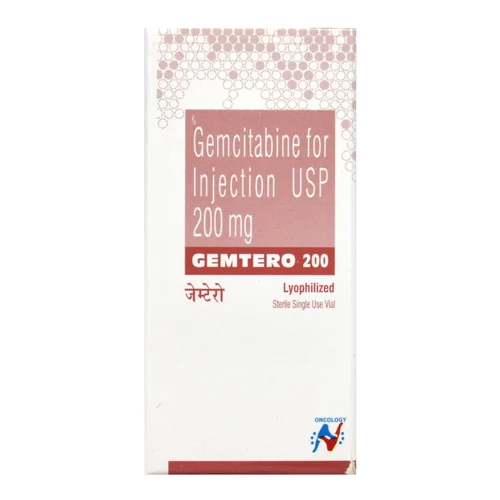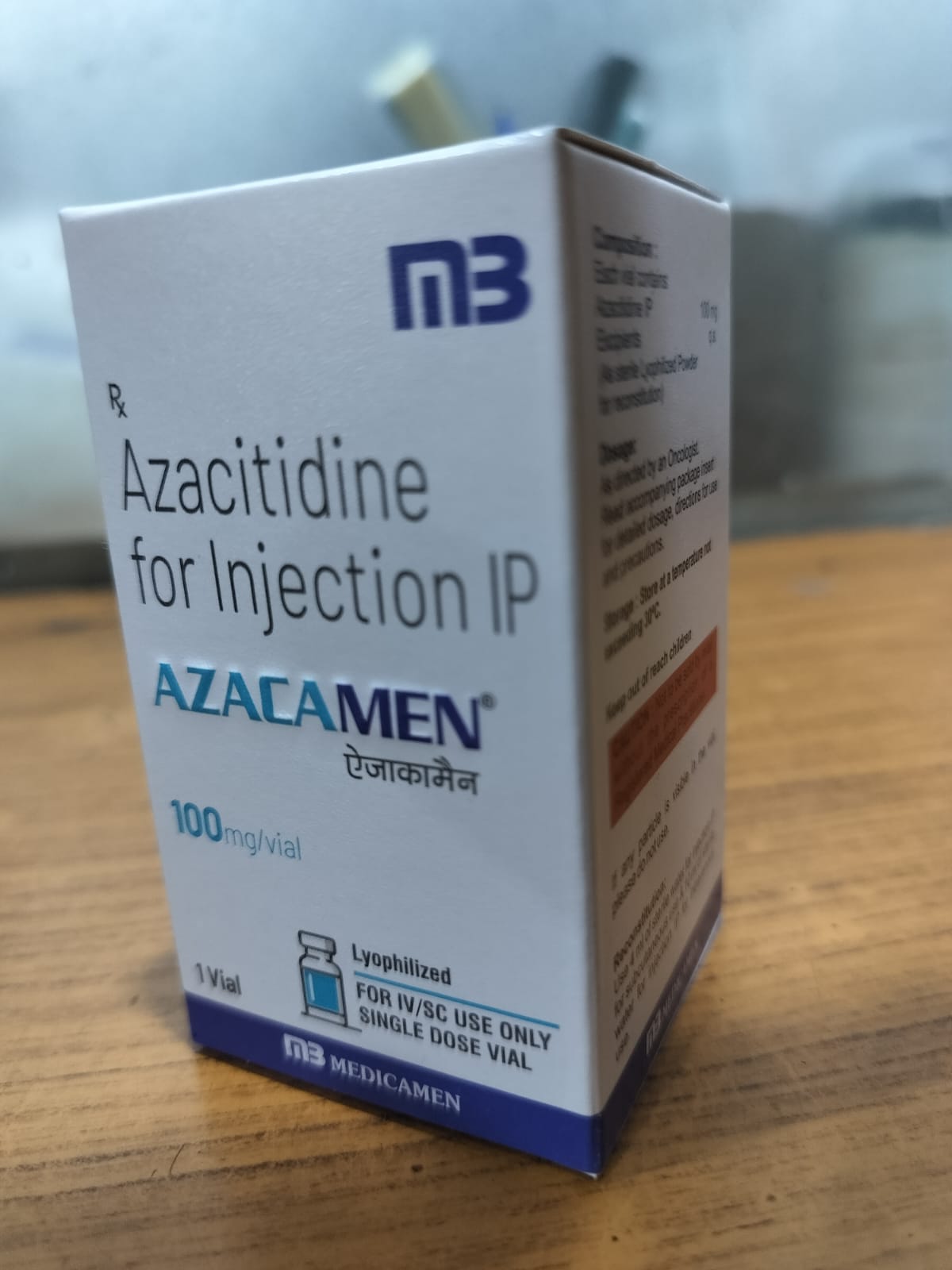Product Intro:
Gemtero is a lyophilized powder for intravenous injection, available in 200 mg and 1 g vials. It is primarily used in hospital oncology settings for the management of pancreatic, lung, breast, bladder, and ovarian cancers. It may be used as monotherapy or in combination with other chemotherapeutic agents depending on the cancer type and stage.
Uses (Indications):
Gemtero is indicated for a wide range of solid tumors:
-
Pancreatic Cancer – First-line treatment for locally advanced or metastatic adenocarcinoma
-
Non-Small Cell Lung Cancer (NSCLC) – Alone or with cisplatin in unresectable or metastatic cases
-
Breast Cancer – In combination with paclitaxel after failure of anthracycline-containing therapy
-
Ovarian Cancer – Second-line treatment in combination with carboplatin
-
Bladder Cancer – Used with cisplatin for locally advanced or metastatic transitional cell carcinoma
-
Other cancers (off-label) – Includes use in head & neck cancer, biliary tract carcinoma, cervical cancer, and thymic tumors
Storage Instructions:
-
Store unopened vials at 20°C to 25°C (controlled room temperature)
-
Protect from light and moisture
-
After reconstitution, the solution should be used within 24 hours if stored at 2–8°C (refrigerated)
-
Do not freeze the reconstituted solution
-
Follow all cytotoxic drug disposal guidelines for discarding unused portions
How It Works (Mechanism of Action):
Gemcitabine is a nucleoside analog of deoxycytidine that becomes activated intracellularly. It is metabolized into:
-
Gemcitabine diphosphate (dFdCDP): Inhibits ribonucleotide reductase, reducing deoxynucleotide levels required for DNA synthesis
-
Gemcitabine triphosphate (dFdCTP): Gets incorporated into DNA, leading to chain termination during replication
This dual mechanism impairs DNA synthesis and repair, particularly affecting rapidly dividing cancer cells, causing apoptosis and tumor shrinkage.
Side Effects:
Common Side Effects:
-
Myelosuppression (especially neutropenia and thrombocytopenia)
-
Fatigue and general weakness
-
Mild nausea and vomiting
-
Elevated liver enzymes (transaminitis)
-
Rash and mild skin reactions
-
Flu-like symptoms (fever, chills, myalgia)
-
Mild hair loss (alopecia)
Serious Side Effects:
-
Severe neutropenia leading to infection or sepsis
-
Pulmonary toxicity (interstitial pneumonitis, ARDS)
-
Hepatic and renal dysfunction
-
Hemolytic Uremic Syndrome (HUS) or Thrombotic Thrombocytopenic Purpura (TTP)
-
Capillary leak syndrome
-
Hypersensitivity or anaphylactic reactions
Dosage (Typical Recommended Dose):
The dose is individualized and based on body surface area (BSA) and indication:
-
Pancreatic Cancer: 1000 mg/m² weekly for 7 weeks, followed by a 1-week rest, then weekly for 3 out of 4 weeks
-
NSCLC: 1000–1250 mg/m² on Days 1, 8, and 15 of a 28-day cycle
-
Breast Cancer: 1250 mg/m² on Days 1 and 8 with paclitaxel
-
Ovarian Cancer: 1000 mg/m² on Days 1 and 8 with carboplatin on Day 1 of a 21-day cycle
-
Bladder Cancer: 1000 mg/m² on Days 1, 8, and 15 with cisplatin on Day 2 or Day 15
Note: Dose modifications are based on blood counts, renal/hepatic function, and toxicity profile.
Method of Administration:
-
Reconstituted with 0.9% Sodium Chloride (normal saline)
-
Administered as a slow intravenous infusion over 30 minutes
-
Prepared and administered by qualified oncology personnel in a sterile environment
-
Not for intramuscular or subcutaneous use
-
Adequate hydration before and after administration is recommended to support kidney function
Precautions:
-
Frequent blood count monitoring is essential to assess for bone marrow suppression
-
Liver and renal function tests should be done before each cycle
-
Avoid in pregnancy (Category D) and advise contraception for both men and women during treatment
-
Use with caution in elderly or patients with pre-existing organ dysfunction
-
Avoid live vaccines during and after treatment
-
Stop treatment if signs of respiratory distress or unusual bleeding occur
Drug Interactions:
-
Platinum-based agents (e.g., cisplatin, carboplatin): May increase hematologic toxicity
-
Paclitaxel: May enhance efficacy, but increases neutropenia risk
-
Radiotherapy: Risk of radiation recall or enhanced tissue toxicity
-
Live attenuated vaccines: Contraindicated due to immunosuppression
-
Nephrotoxic drugs: May worsen renal function when combined
Allergies (Warnings for Allergic Reactions):
-
Contraindicated in patients with known hypersensitivity to gemcitabine or formulation components
-
Signs of allergic reactions include rash, fever, dyspnea, swelling, or hypotension
-
In case of severe hypersensitivity, discontinue immediately and initiate emergency care
Overdose Information:
-
Symptoms: Severe myelosuppression, mucositis, hepatic/renal impairment
-
No specific antidote available
-
Treatment is symptomatic and supportive — may include transfusions, IV fluids, and close monitoring
-
Hospitalization and critical care intervention may be necessary in severe overdose
Missed Dose Instructions:
-
Do not self-adjust or attempt to take the missed dose later
-
Inform the oncology team if an appointment is missed
-
Doses are usually adjusted or rescheduled under medical supervision
-
Continuation depends on lab results and toxicity management
Additional Notes:
-
Gemtero is a high-alert cytotoxic agent – handle with gloves, masks, and protective gear
-
Patients should avoid close contact with sick individuals due to immunosuppression risk
-
May affect fertility – consider sperm/egg preservation before starting therapy
-
Regular oncologist follow-up is crucial to monitor therapeutic response and manage adverse effects
-
Patients should maintain adequate nutrition, hydration, and rest throughout the chemotherapy regimen



